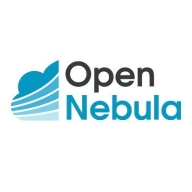

OpenNebula and ServiceNow IT Operations Management compete in the cloud and IT operations management space. ServiceNow IT Operations Management is considered superior due to its extensive features, appealing to businesses prioritizing functionality.
Features: OpenNebula offers simplicity in building private clouds, flexibility in supporting various infrastructures, and customization options that make it ideal for straightforward cloud solutions. In contrast, ServiceNow IT Operations Management provides comprehensive IT service management with sophisticated workflows, integrations with enterprise IT services, and extensive automation capabilities.
Room for Improvement: OpenNebula could enhance its customer service resources, improve scalability features, and provide more detailed documentation for user support. ServiceNow IT Operations Management could benefit from a simpler deployment process, a more user-friendly interface for non-IT users, and competitive pricing structures.
Ease of Deployment and Customer Service: OpenNebula is known for its straightforward deployment and strong support for open standards, which aids easy integration with existing infrastructures. Its customer service is adequate but limited compared to larger organizations. ServiceNow IT Operations Management has a more complex deployment due to its wide-ranging capabilities but offers extensive support and resources through its structured customer service program.
Pricing and ROI: OpenNebula's lower setup costs attract organizations with limited budgets aiming for cost-effective cloud management and substantial ROI. ServiceNow IT Operations Management requires a higher initial investment but delivers greater ROI by enhancing IT operations efficiency through its broad feature set.
| Product | Market Share (%) |
|---|---|
| OpenNebula | 5.7% |
| ServiceNow IT Operations Management | 1.8% |
| Other | 92.5% |


| Company Size | Count |
|---|---|
| Small Business | 7 |
| Midsize Enterprise | 6 |
| Large Enterprise | 3 |
| Company Size | Count |
|---|---|
| Small Business | 12 |
| Midsize Enterprise | 5 |
| Large Enterprise | 26 |
OpenNebula provides the most simple but feature-rich and flexible solution for the comprehensive management of virtualized data centers to enable private, public and hybrid IaaS clouds. OpenNebula interoperability makes cloud an evolution by leveraging existing IT assets, protecting your investments, and avoiding vendor lock-in.
OpenNebula is a turnkey enterprise-ready solution that includes all the features needed to provide an on-premises (private) cloud offering, and to offer public cloud services.
ServiceNow IT Operations Management (ITOM) is a cloud management and infrastructure tool that facilitates the administrative and development process of creating, planning, and operating digital services, technology, application requirements, and components for organizations. Service Now ensures effectiveness, performance, and availability throughout an organization's processes and services.
ServiceNow ITOM will help organizations facilitate consistent policies with regard to deployment, support, and services to ensure trustworthiness and quality of service (QoS). ServiceNow ITOM will ensure that all applications, services, and infrastructure are consistently available and stable.
ServiceNow IT Operations Management Features
ServiceNow IT Operations Management Benefits
ServiceNow ITOM enables organizations to become robust, strategic operations able to successfully anticipate issues before they have an impact on the organization. Organizations that use ServiceNOw ITOM will be able to easily automate workflows and improve how their IT teams communicate and work together to deliver successful outcomes and maintain productivity and profitability 24/7.
Reviews from Real Users
“With this solution, operational costs will be reduced. Your maintenance cost will be reduced when you use the item model. You will deliver a fast solution to the customers. If something happens on the server-side or router-side, it will be immediately caught. Efficiencies are improved. “ - Rupesh J., Solutions Architect at Globant
“It has been very useful for tracking. It has evolved a lot over time, and there is a single pane of glass where you can track and see everything.” - Uday T., Project Manager at MindTree
We monitor all Cloud Management reviews to prevent fraudulent reviews and keep review quality high. We do not post reviews by company employees or direct competitors. We validate each review for authenticity via cross-reference with LinkedIn, and personal follow-up with the reviewer when necessary.